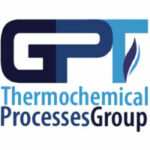SOBRE MÍ
Research interests
- High temperature chemistry
- Combustion
- Chemical kinetic modelling
- Biofuel conversion
- Thermochemical processes
- Minimization of pollutant emissions (NOx, SO2, PAH, soot, etc)
PUBLICATIONS
2025
Viteri, Fausto; Alexandrino, Katiuska; Millera, Ángela; Bilbao, Rafael; Alzueta, María U
Polycyclic aromatic hydrocarbons formed during the pyrolysis of dimethoxymethane (DMM). Comparison with other oxygenated additives Artículo de revista
En: Fuel, vol. 383, pp. 133750, 2025, ISSN: 0016-2361.
@article{viteri_polycyclic_2025,
title = {Polycyclic aromatic hydrocarbons formed during the pyrolysis of dimethoxymethane (DMM). Comparison with other oxygenated additives},
author = {Fausto Viteri and Katiuska Alexandrino and Ángela Millera and Rafael Bilbao and María U Alzueta},
url = {https://www.sciencedirect.com/science/article/pii/S0016236124028990},
doi = {10.1016/j.fuel.2024.133750},
issn = {0016-2361},
year = {2025},
date = {2025-03-01},
urldate = {2025-03-01},
journal = {Fuel},
volume = {383},
pages = {133750},
abstract = {The influence of the temperature (1075 – 1475 K) and inlet concentration of fuel (33,333 and 50,000 ppmv) on the formation of the 16 EPA-priority Polycyclic Aromatic Hydrocarbons (PAH) from the pyrolysis of dimethoxymethane (DMM) was analyzed. PAH were detected in different phases (gas phase, adsorbed on soot, and stuck on the reactor walls) and quantified by gas chromatography-mass spectrometry (GC–MS). Additionally, the toxicity of the PAH samples, expressed as B[a]P-eq, was analyzed in all experiments. A comparison with the results obtained from the pyrolysis of other oxygenated compounds was also performed and similar behaviors were observed. The main results showed that, at low temperatures, the highest concentrations of PAH were found in the gas phase, while at high temperatures were found on soot. For both inlet concentrations of DMM, the light PAH, such as naphthalene and acenaphthylene, were found in major concentrations, in all phases and temperatures. The heavy PAH, such as fluoranthene and pyrene, increased its concentration on soot at highest temperatures. The highest formation of soot was obtained at 1475 K and follows the trend: 2,5DMF < tert-butanol < 2MF < 2butanol < iso-butanol < 1-butanol < ethanol < DMC < DMM. The highest formation of PAH was at 1275 K with the tendency: tert-butanol < 2-butanol < 1-butanol < 2,5DMF < 2MF < iso-butanol < ethanol < DMC < DMM. The highest B[a]P-eq value was found in the pyrolysis of 2,5DMF, and the lowest in the pyrolysis of DMM.},
keywords = {},
pubstate = {published},
tppubtype = {article}
}
Ruiz-Gutiérrez, A.; Rebollo, P.; Alzueta, María U
Combustion of NH3/DME and NH3/DME/NO mixtures Artículo de revista
En: Fuel, vol. 381, pp. 133253, 2025, ISSN: 0016-2361.
@article{ruiz-gutierrez_combustion_2025,
title = {Combustion of NH3/DME and NH3/DME/NO mixtures},
author = {A. Ruiz-Gutiérrez and P. Rebollo and María U Alzueta},
url = {https://www.sciencedirect.com/science/article/pii/S0016236124024025},
doi = {10.1016/j.fuel.2024.133253},
issn = {0016-2361},
year = {2025},
date = {2025-02-01},
urldate = {2025-02-01},
journal = {Fuel},
volume = {381},
pages = {133253},
abstract = {The objective of this work is to study the oxidation of ammonia and dimethyl ether mixtures (NH3/DME) both in the absence and the presence of monoxide of nitrogen (NO). For this purpose, laboratory experiments have been conducted in a quartz flow reactor setup in the 875–1425 K temperature range at atmospheric pressure, modifying the oxygen excess ratio (λ), and the NH3/DME mixture ratio with and without NO. The experimental results have been simulated with a literature-based kinetic mechanism. The results show that the presence of DME and an oxygen excess ratio affect the conversion of NH3, shifting its oxidation to lower temperatures, which decrease as the DME concentration in the mixture and λ increase. Interactions between ammonia and DME seem to be important under the studied conditions, presumably involving the formation and thermal decomposition of methyl nitrite (CH3ONO). These interactions affect the oxidation of ammonia at low temperatures, consume and produce NO, which would determine the final NO emission. When there is NO in the NH3/DME mixtures, NO is reduced up to 60 %, also favouring the oxidation of ammonia, but with an almost imperceptible effect of NO in the case of DME. The addition of different concentrations of DME also affects the oxidation behaviour of ammonia in NH3/DME/NO mixtures. In general, the conversion of both NH3 and DME is highly determined by the concentration of OH radicals, although thermal decomposition is also relevant for DME.},
keywords = {},
pubstate = {published},
tppubtype = {article}
}
2024
Glarborg, Peter; Alzueta, Maria U
Decomposition of CH3NH2: Implications for CHx/NHy radical–radical reactions Artículo de revista
En: International Journal of Chemical Kinetics, no n/a, pp. 1-14, 2024.
@article{https://doi.org/10.1002/kin.21760,
title = {Decomposition of CH3NH2: Implications for CHx/NHy radical–radical reactions},
author = {Peter Glarborg and Maria U Alzueta},
url = {https://onlinelibrary.wiley.com/doi/abs/10.1002/kin.21760},
doi = {https://doi.org/10.1002/kin.21760},
year = {2024},
date = {2024-09-19},
urldate = {2024-09-19},
journal = {International Journal of Chemical Kinetics},
number = {n/a},
pages = {1-14},
abstract = {Abstract Experiments on methylamine (CH3NH2$rm CH_3rm NH_2$) decomposition in shock tubes, flow reactors, and batch reactors have been re-examined to improve the understanding of hydrocarbon/amine interactions and constrain rate constants for CHx$rm CH_ x$ + NHy$rm NH_ y$ reactions. In high-temperature shock tube experiments, the rapid thermal dissociation of CH3NH2$rm CH_3rm NH_2$ provides a fairly clean source of CH3$rm CH_3$ and NH2$rm NH_2$ radicals, allowing an assessment of reactions of CH3$rm CH_3$ with NH2$rm NH_2$ and NH. At the lower temperatures in batch and flow reactors, CH3NH2$rm CH_3rm NH_2$ is mostly consumed by reaction with H to form CH2NH2$rm CH_2rm NH_2$ + H2$rm H_2$; these results are useful in determining the fate of the CH2NH2$rm CH_2rm NH_2$ radical. Interpretation of these data, along with flow reactor data for the CH3NH2$rm CH_3rm NH_2$/H system at lower temperature, indicates that at temperatures up to about 1400 K at atmospheric pressure and above 2000 K at 100 atm, the CH3$rm CH_3$ + NH2$rm NH_2$ reaction forms mainly methylamine. At sufficiently high temperature, H-abstraction to form CH4$rm CH_4$ + NH and addition–elimination to form CH2NH2$rm CH_2rm NH_2$ + H become competitive. The CH3$rm CH_3$ + NH reaction, with a rate constant close to collision frequency, forms CH2NH$rm CH_2rm NH$ + H, also leading into the hydrocarbon amine pool. Thus, methylamine can be expected to be an important intermediate in co-combustion of natural gas and ammonia, and more work on the chemistry of CH3NH2$rm CH_3rm NH_2$ is desirable.},
keywords = {},
pubstate = {published},
tppubtype = {article}
}
Alzueta, Maria U; Mercader, Victor D; Cuoci, Alberto; Gersen, Sander; Hashemi, Hamid; Glarborg, Peter
Flow Reactor Oxidation of Ammonia–Hydrogen Fuel Mixtures Artículo de revista
En: Energy & Fuels, vol. 38, no 4, pp. 3369–3381, 2024, ISSN: 0887-0624, (Publisher: American Chemical Society).
@article{alzueta_flow_2024,
title = {Flow Reactor Oxidation of Ammonia–Hydrogen Fuel Mixtures},
author = {Maria U Alzueta and Victor D Mercader and Alberto Cuoci and Sander Gersen and Hamid Hashemi and Peter Glarborg},
url = {https://doi.org/10.1021/acs.energyfuels.3c03929},
doi = {10.1021/acs.energyfuels.3c03929},
issn = {0887-0624},
year = {2024},
date = {2024-02-01},
urldate = {2024-02-01},
journal = {Energy & Fuels},
volume = {38},
number = {4},
pages = {3369–3381},
abstract = {Hydrogen-assisted oxidation of ammonia under flow reactor conditions was investigated through experiments and chemical kinetic modeling. Novel experiments, conducted in a tubular laminar flow reactor as a function of the NH3/H2 ratio, stoichiometry, and temperature (725–1475 K), were analyzed along with literature results from tubular and jet-stirred flow reactors. Ignition and oxidation of NH3 is strongly promoted by the presence of H2 under all conditions investigated. In general, the behavior is captured well by the kinetic model. With an increasing fraction of H2 in the fuel mixture, the generation of chain carriers gradually shifts from being controlled by the amine reaction subset to being dominated by the oxidation chemistry of H2, which is known more accurately. However, under reducing conditions, the H2 consumption rate is strongly underpredicted. This shortcoming suggests that the thermochemistry of amine radicals and/or the formation of higher amines need further assessment. The present analysis shows that for lean oxidation of NH3/H2 mixtures in tubular flow reactors, data obtained at higher temperatures, particularly for NO formation, may be strongly affected by the reaction during preheating or by mixing (dependent on reactor design) in the inlet section prior to the isothermal zone. Modeling predictions for the high pressure, medium-temperature ignition conditions in a large diesel engine indicate that NH3/H2 fuel mixtures may still require a cofuel to secure stable ignition.},
note = {Publisher: American Chemical Society},
keywords = {},
pubstate = {published},
tppubtype = {article}
}
Marrodán, Lorena; Pérez, Teresa; Alzueta, María U
Conversion of methylamine in a flow reactor and its interaction with NO Artículo de revista
En: Combustion and Flame, vol. 259, pp. 113130, 2024, ISSN: 0010-2180.
@article{marrodan_conversion_2024,
title = {Conversion of methylamine in a flow reactor and its interaction with NO},
author = {Lorena Marrodán and Teresa Pérez and María U Alzueta},
url = {https://www.sciencedirect.com/science/article/pii/S0010218023005059},
doi = {10.1016/j.combustflame.2023.113130},
issn = {0010-2180},
year = {2024},
date = {2024-01-01},
urldate = {2024-01-01},
journal = {Combustion and Flame},
volume = {259},
pages = {113130},
abstract = {The conversion of methylamine (CH3NH2, 1000 ppm) has been studied in an atmospheric-pressure flow reactor from both experimental and modeling points of view. Several values of the oxygen excess ratio (λ), from pyrolysis to fuel-lean conditions, have been tested, and a large number of different species have been quantified experimentally by three different diagnostic techniques: gas chromatography, Fourier Transform Infra-red spectroscopy (FTIR) and an infra-red NO analyzer. For the first time, the influence of NO addition (500 and 1000 ppm) on the stoichiometric oxidation of methylamine has also been experimentally evaluated, and the main products of such interaction have been identified. Results indicate that, unlike the little influence of oxygen availability on methylamine conversion, the presence of different concentrations of NO promotes methylamine oxidation at lower temperatures. A literature mechanism has been validated against the present experimental data since previous experimental works under these conditions are scarce. The largest discrepancies have been found for the formation of NH3 and NO as oxidation products, which are under and overestimated by the model, respectively, and under pyrolysis conditions, where modification of the kinetic parameters for the reaction CH2NH2 ⇌ CH2NH + H from the original mechanism notably improves the agreement between experimental and simulated results.},
keywords = {},
pubstate = {published},
tppubtype = {article}
}


